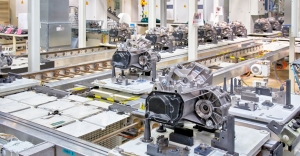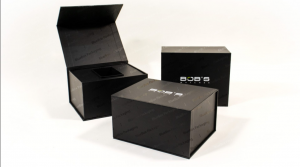please clcik here:
https://www.iztools.com/utility-knife-factory.html
Introduction
Utility knives are essential tools used across various industries and households for cutting tasks. Their production involves precise manufacturing processes to ensure durability, sharpness, and safety. This article explores the detailed production process of utility knives, covering raw materials, manufacturing steps, blade design, quality control, and safety considerations. Additionally, it addresses the factors influencing utility knife performance and maintenance.
Raw Materials Used in Utility Knife Production
Steel Types for Blades
The blade is the most critical component of a utility knife, and its quality depends heavily on the steel used. Common types include:
-
High-Carbon Steel: Known for excellent hardness and edge retention, making it ideal for professional-grade blades.
-
Stainless Steel: Offers corrosion resistance and good sharpness, suitable for general-purpose knives.
-
Tool Steel: Provides durability and maintains a fine edge even under heavy use.
The steel is typically supplied in coil form, which allows efficient handling and continuous processing during manufacturing.
Handle Materials and Assembly Components
Handles are made from various materials such as steel bars, plastics, or wood, depending on the knife's intended use and price point. Rivets or glue are used to assemble the handle parts securely. Ergonomic design and non-slip surfaces are critical for user comfort and safety.
Detailed Manufacturing Process of Utility Knives
Blade Production Steps
1. Steel Strip Preparation and Stamping
Steel strips, often from coils, are unrolled and cut to size. A punch press stamps openings and attachment points into the strip, which are used later to fix the blade in the handle or cartridge. Logos or brand names may also be stamped at this stage.
2. Scoring and Breaking
The steel strip is scored with axial lines to define individual blades. These score lines act as breaking points, allowing blades to be snapped off easily if designed as snap-off utility knives.
3. Heat Treatment: Hardening and Tempering
The steel strip undergoes heat treatment by heating it to temperatures between 800°C and 900°C. This process transforms the steel's microstructure to austenite, which hardens upon quenching. Tempering follows to reduce brittleness while maintaining hardness.
4. Grinding and Honing the Blade Edge
The blade edge is ground at a shallow angle (typically between 10° to 32°) on both sides to form a sharp cutting edge. Honing applies a secondary, less acute angle (around 26° to 36°) to strengthen the edge and extend its lifespan. This double-angle edge ensures a balance between sharpness and durability.
5. Burr Removal and Polishing
Leather or synthetic wheels remove burrs created during grinding and honing. Polishing enhances the blade's surface finish, contributing to corrosion resistance and aesthetic appeal.
Handle Fabrication and Assembly
Handles are shaped through forging, stamping, or molding processes. They are then polished and fitted with bolsters or other reinforcements. The blade and handle parts are assembled using rivets or adhesives to ensure a secure and durable connection.
Blade Design and Sharpness Factors
Blade Geometry
Utility knife blades often have trapezoidal or parallelogram shapes, designed for efficient cutting and easy snapping in segmented blades. The edge angle and blade thickness are optimized for precision and strength.
Sharpness and Edge Retention
Blade sharpness depends on material quality, heat treatment, and grinding precision. High-carbon steel blades retain sharpness longer due to their hardness, while stainless steel balances sharpness with corrosion resistance. Snap-off blades allow users to maintain sharpness by breaking off dull segments.
Safety Considerations
Sharp blades require careful handling. Ergonomic handles reduce fatigue and improve control, lowering the risk of accidents. Proper maintenance, including regular sharpening and safe storage, is essential to prolong blade life and ensure user safety.
Quality Control and Inspection
Throughout production, utility knives undergo rigorous inspection to ensure blade hardness, edge sharpness, and handle integrity meet standards. Final packaging includes protective measures to prevent damage and ensure safe transport.
Maintenance and Care of Utility Knives
-
Cleaning: Hand wash with mild soap and dry immediately to prevent rust.
-
Sharpening: Frequency depends on usage; typically every few months or when cutting efficiency declines.
-
Storage: Use blade covers or retractable designs to protect edges and users.
-
Replacement: Snap-off blades or replaceable blades simplify maintenance and extend tool life.
Summary
Utility knife production is a complex process involving high-quality raw materials, precise manufacturing steps, and stringent quality control. The combination of advanced steel treatment, blade design, and ergonomic handle fabrication results in versatile, durable, and safe cutting tools essential for many applications. Proper maintenance ensures these knives remain effective and safe over time.
Frequently Asked Questions (FAQs)
Q1: What materials are commonly used for utility knife blades?
A1: High-carbon steel, stainless steel, and tool steel are commonly used for their hardness, corrosion resistance, and durability.
Q2: How is the sharpness of a utility knife blade achieved?
A2: Sharpness is achieved through precision grinding, heat treatment, and honing processes that create a finely angled cutting edge.
Q3: What is the purpose of scoring the steel strip during production?
A3: Scoring defines break lines for snap-off blades, allowing users to easily snap off dull segments to reveal a fresh edge.
Q4: How often should utility knives be sharpened?
A4: Sharpening frequency depends on usage but generally every few months or when the blade shows signs of dullness.
Q5: What safety features are important in utility knife design?
A5: Ergonomic handles, non-slip grips, blade guards, and snap-off blade designs enhance safety by improving control and reducing accidental cuts.
Article Summary
This comprehensive guide explores utility knife production, detailing the raw materials, manufacturing processes, blade design, and assembly methods. It highlights how heat treatment, precision grinding, and ergonomic handle design contribute to sharp, durable, and safe utility knives. Maintenance tips and safety considerations ensure optimal performance and longevity for these essential cutting tools.






